
Environmental Epidemiology
Scope & Guideline
Connecting global scholars to share groundbreaking findings in environmental epidemiology.
Introduction
Aims and Scopes
- Environmental Exposure Assessment:
The journal emphasizes rigorous methodologies for assessing environmental exposures, including air and water quality, chemical pollutants, and psychosocial stressors affecting health. - Public Health Outcomes:
It investigates the impact of environmental factors on various health outcomes, such as respiratory diseases, cardiovascular conditions, and developmental disorders in children. - Multidisciplinary Approaches:
The journal fosters interdisciplinary collaboration, integrating fields such as epidemiology, toxicology, sociology, and environmental science to address complex health challenges. - Global Health Perspectives:
Environmental Epidemiology places a strong emphasis on international studies, examining health impacts in diverse populations and advocating for equitable health solutions globally. - Policy and Advocacy:
The journal engages with policy implications of research findings, promoting actionable insights that inform public health initiatives and environmental regulations.
Trending and Emerging
- Climate Change and Health:
Recent publications increasingly address the health impacts of climate change, including heat-related illnesses and the effects of extreme weather events, highlighting the urgent need for climate-resilient health strategies. - Cumulative Exposure Assessments:
There is a growing trend towards studies that evaluate the cumulative impact of multiple exposures, reflecting a more holistic understanding of how various environmental factors interact to influence health. - Social Determinants of Health:
Research is increasingly focusing on the intersections of environmental exposures and social determinants, such as socioeconomic status and access to healthcare, emphasizing health inequities. - Innovative Methodological Approaches:
The journal showcases advances in exposure assessment methodologies, including the use of geospatial analysis and machine learning techniques to better understand health impacts. - Emerging Contaminants and Endocrine Disruptors:
There is a notable increase in studies examining the health effects of emerging contaminants, such as PFAS and neonicotinoids, reflecting growing public concern and regulatory scrutiny.
Declining or Waning
- Single Exposure Studies:
Research focusing exclusively on single environmental exposures is becoming less common, as there is a shift towards understanding the cumulative and interactive effects of multiple exposures. - Descriptive Epidemiology:
There is a noticeable decline in purely descriptive studies that do not incorporate advanced statistical modeling or mechanistic insights into health outcomes. - Localized Studies:
Research centered on localized or specific geographic areas without broader implications or comparisons has decreased, likely due to the journal's emphasis on multi-country and multi-city studies. - Traditional Pollutant Focus:
There is a waning interest in traditional pollutants (e.g., lead, mercury) as new emerging contaminants (e.g., PFAS, microplastics) gain more attention in recent studies.
Similar Journals

Air Quality Atmosphere and Health
Bridging the Gap Between Air Quality and Community HealthAir Quality, Atmosphere and Health is a leading interdisciplinary journal published by Springer, focusing on the intricate relationship between air quality and public health. With roots dating back to 2008, the journal has established itself as a pivotal resource for researchers and professionals in the fields of Atmospheric Science, Health, Toxicology and Mutagenesis, and Pollution Management and Policy, achieving a commendable Q2 ranking across multiple categories in 2023. The journal’s rigorous peer-review process ensures that it publishes high-quality research that addresses contemporary challenges in air quality management and its impact on health outcomes. With no Open Access option, the journal maintains a model that prioritizes valuable insights for subscription holders, making it an essential reference point for advancing knowledge on environmental health issues. The journal is based in the Netherlands and contributes significantly to the understanding of atmospheric pollutants and their effects, evidenced by its strong Scopus rankings, positioning it in the top percentiles of various environmental science categories.
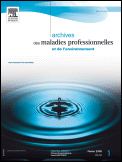
Archives des Maladies Professionnelles et de l Environnement
Pioneering Studies in Occupational Health and Environmental SafetyArchives des Maladies Professionnelles et de l'Environnement is a vital scholarly journal published by Elsevier Science Inc, focusing on the critical intersections of public health, environmental issues, and occupational health. With an ISSN of 1775-8785 and an E-ISSN of 1778-4190, this French-based journal serves as a platform for researchers, professionals, and students to explore contemporary challenges and advancements in these essential fields. Although it holds a Q4 ranking in the 2023 Scopus quartiles, it provides a unique opportunity for new contributions that can drive future research directions. The journal accepts a variety of article types, with the aim of spreading knowledge that can influence policy and improve practices in occupational health and environmental safety. As we approach the convergence of its publication years from 2004 to 2024, the journal remains committed to fostering a comprehensive understanding of the impact of work and environmental exposure on health, making it an important resource for anyone invested in these disciplines.

Environnement Risques & Sante
Navigating the Complexities of Environmental SafetyEnvironnement Risques & Sante is a prominent journal focused on the intersection of environmental issues, public health, and safety, offering a platform for scholarly discourse on the critical challenges posed by environmental risks to human health. Published by JOHN LIBBEY EUROTEXT LTD, this journal aims to disseminate impactful research that enhances our understanding of toxicology, mutagenesis, and their implications for public health policy and practices. Though it ceased coverage in Scopus in 2021, its historical contributions remain relevant, addressing urgent topics in environmental science and occupational health. Researchers and professionals engaged in these fields will find valuable insights and findings that inform practice and promote sustainable solutions. For interested readers, further exploration of the journal can provide essential knowledge in coping with contemporary environmental health challenges.

EUROPEAN JOURNAL OF EPIDEMIOLOGY
Advancing public health through rigorous epidemiological research.The European Journal of Epidemiology is a premier peer-reviewed journal published by Springer, specializing in the vast and critical field of epidemiology. With its ISSN 0393-2990 and E-ISSN 1573-7284, this journal has been a leading platform for disseminating high-quality research since its inception in 1985, encompassing a comprehensive range of topics pertinent to public health and epidemiological science. Proudly based in the Netherlands, the journal has secured a prestigious Q1 ranking in the field of Epidemiology and boasts an impressive Scopus rank of #8 out of 148 in its category, placing it in the 94th percentile among its peers. With a commitment to advancing knowledge and practice in epidemiology, the journal provides invaluable insights for researchers, healthcare professionals, and students, facilitating a better understanding of disease distribution and determinants in populations. While it operates under a subscription model, the European Journal of Epidemiology continues to uphold its reputation as an essential resource for innovative research and public health advancements through the years.
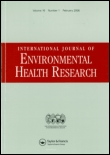
INTERNATIONAL JOURNAL OF ENVIRONMENTAL HEALTH RESEARCH
Exploring the Nexus of Environment and HealthINTERNATIONAL JOURNAL OF ENVIRONMENTAL HEALTH RESEARCH, published by Taylor & Francis Ltd, serves as a cornerstone for interdisciplinary research focusing on the crucial intersections of environmental science and public health since its inception in 1991. With an ISSN of 0960-3123 and an E-ISSN of 1369-1619, the journal spans diverse topics related to environmental health, toxicology, and pollution science, holding high ranks in 2023 such as Q2 in Pollution and Public Health, showcasing its vital contributions to the field. Researchers will appreciate its robust platform as it features rigorous peer-reviewed articles aimed at unveiling the complexities of human health in relation to environmental factors. While the journal maintains a traditional access model, it ensures broad dissemination of high-quality research works. As a reputable source for both emerging and established scholars, the International Journal of Environmental Health Research offers critical insights and advancements pivotal to fostering a healthier planet.
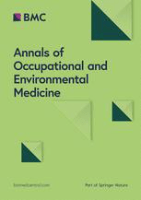
Annals of Occupational and Environmental Medicine
Fostering Collaboration for a Sustainable Health FutureAnnals of Occupational and Environmental Medicine is a premier open-access journal dedicated to the interdisciplinary study of occupational and environmental health, published by the Korean Society for Occupational & Environmental Medicine. Since its inception in 2013, this journal has become a key platform for researchers, professionals, and students alike to disseminate findings that contribute to the understanding and improvement of health in the workplace and surrounding environments. With an ISSN of 2052-4374 and ranked in the Q3 category (2023) in Public Health, this journal emphasizes innovative research and evidence-based practices in the field. Insights from the Scopus ranking, placing it at #428 out of 665 in its category, highlight its growing impact, despite being positioned in the 35th percentile. Its open-access model ensures that valuable knowledge is readily available, fostering collaboration and progression towards healthier work and living conditions globally. With an ambitious convergence of research spanning from 2014 to 2024, the journal stands as an essential resource for those committed to advancing occupational and environmental health.
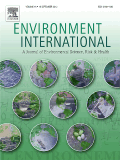
ENVIRONMENT INTERNATIONAL
Uncovering the Science Behind Sustainable DevelopmentENVIRONMENT INTERNATIONAL is a premier journal dedicated to advancing the field of environmental science. Published by PERGAMON-ELSEVIER SCIENCE LTD, it boasts an impressive impact factor and holds a prestigious Q1 classification in the Environmental Science category, reflecting its influence and reputation within academia. Since transitioning to Open Access in 2019, the journal has increased its accessibility, allowing a wider audience—from researchers to industry professionals—to engage with cutting-edge studies that address crucial environmental challenges. With a Scopus rank of #3 out of 233 in General Environmental Science and a commendable 98th percentile, ENVIRONMENT INTERNATIONAL is committed to publishing high-quality research that informs policy and practice. Covering a broad spectrum of topics from pollution and climate change to sustainable development, this journal serves as a vital resource for those dedicated to making a positive impact on our planet. For submissions, inquiries, or to explore its extensive archives dating from 1976 to 2024, please visit their site at the Kidlington, Oxford headquarters.
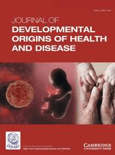
Journal of Developmental Origins of Health and Disease
Fostering Knowledge on Developmental Influences in MedicineThe Journal of Developmental Origins of Health and Disease is a premier academic publication under the esteemed Cambridge University Press, dedicated to advancing the understanding of how developmental processes influence health outcomes across the lifespan. With an ISSN of 2040-1744 and an E-ISSN of 2040-1752, this journal has established itself as a critical resource in the field of medicine, currently positioned in the Q2 category of Medicine (miscellaneous). Having converged from 2010 to 2024, this journal reflects a significant commitment to exploring the interconnections between early development and subsequent health conditions. Ranked 147 out of 398 in its category according to Scopus, it retains a commendable 63rd percentile status, highlighting its contributions to this rapidly evolving field. Though it does not offer open access, the journal remains a vital platform for researchers, professionals, and students interested in uncovering the intricate links between developmental biology and public health challenges.
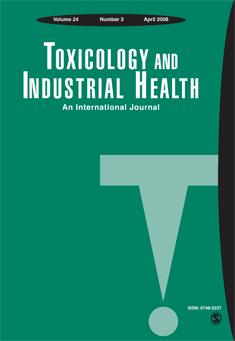
TOXICOLOGY AND INDUSTRIAL HEALTH
Transforming toxicology insights into real-world health solutions.TOXICOLOGY AND INDUSTRIAL HEALTH, published by SAGE PUBLICATIONS INC, is a premier journal in the field of toxicology, public health, and environmental health, with a significant history dating back to 1985. With its ISSN 0748-2337 and E-ISSN 1477-0393, the journal provides a platform for disseminating groundbreaking research and comprehensive reviews that address the complexities of toxic substances in industrial and occupational settings. Despite its Q3 ranking among peers in health, toxicology, and public health, this journal is becoming increasingly influential, reflected in its growing citation metrics. Researchers and professionals benefit from its commitment to fostering knowledge in both theoretical and practical contexts, making it an essential resource for those dedicated to advancing understanding in this vital field. The journal's main objectives include promoting research addressing the implications of toxicology on health and safety standards across industries, ensuring accessibility to current studies for a global audience. Overall, TOXICOLOGY AND INDUSTRIAL HEALTH plays a critical role in bridging the gap between research and real-world applications, proving invaluable to students, professionals, and researchers alike in their pursuit of enhancing public health and environmental safety.
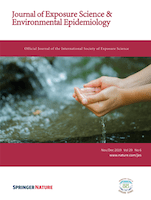
Journal of Exposure Science and Environmental Epidemiology
Innovating Solutions Through Environmental EpidemiologyJournal of Exposure Science and Environmental Epidemiology, published by SPRINGERNATURE in the United Kingdom, is a leading platform for researchers and practitioners dedicated to understanding the interplay between environmental factors and human health. With an impressive impact factor and Q1 and Q2 rankings across multiple categories such as Pollution and Public Health, the journal has established itself as a critical resource in the fields of epidemiology, toxicology, and environmental science. Covering a wide spectrum of studies from 2006 to 2024, it aims to disseminate timely research that empowers professionals and informs policy decisions. Although there is no open access option at this time, the journal's rigorous peer-review process ensures that only high-quality research is published, further cementing its reputation as a vital source of knowledge for advancing public health and environmental protection.